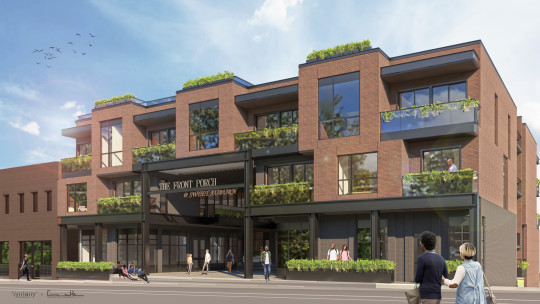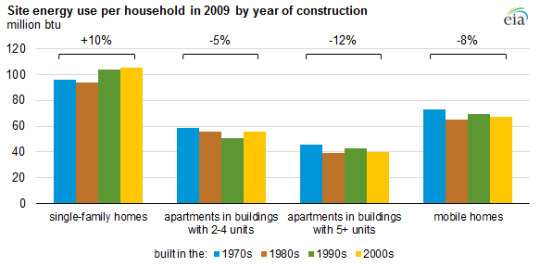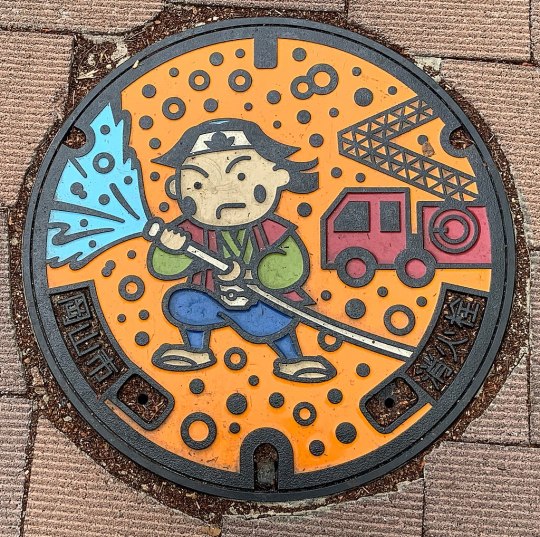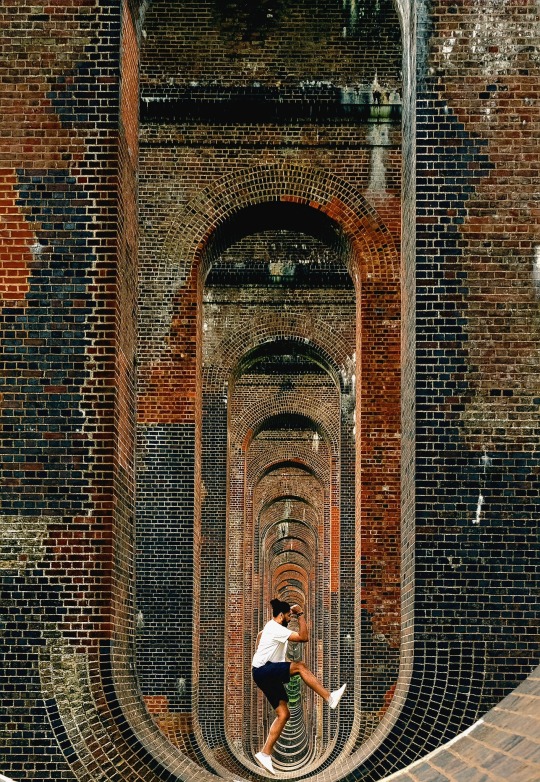#urban infrastructure
Video
ChattanoogaUrbanistSociety
#chattanooga#mutual aid#community care#walkable cities#urban development#urban infrastructure#urbanism#ideas for getting involved#tiktok
83 notes
·
View notes
Text
Dear universe, bicycles are not a nuisance. They are a perfectly valid, quiet, and rarely violent means of transportation.
Cars and trucks, on the other hand, are like the AR-15s of the freeway. Maybe, just maybe, we should take a moment and reflect on how many deaths they have caused.
#fuck cars#cars#automobile#trucks#road rage#bicycles#the war on cars#pedestrians#urban infrastructure#city infrastructure#ar 15#air pollution#car crash#environment#infrastructure#suburbia#vehicular manslaughter#road safety#stroads#stroad#cycling#asphault#walking#five minute city
14 notes
·
View notes
Text


Fascinating how a place can feel different portrait and landscape.
#Photography#Photo#San Francisco#Sf#Cloudy day#Urban architecture#Urban infrastructure#Urban#Cityscape
10 notes
·
View notes
Text
youtube
After a flash flood that sent dead rats floating through the streets of Copenhagen, the city began reimagining itself. Away from concrete and asphalt and towards softer, “spongier” settlements that work with the natural flow of the water cycle. With cloudbursts increasing in intensity because of climate change, many cities from Beijing to Chennai are trying this too - and Copenhagen offers some good lessons.
#planeta #flooding #urbanplanning
Credits:
Reporter: Aditi Rajagopal
Camera: Omkar Phatak
Video Editor: Aditi Rajagopal
Animation: William Bryan
Supervising Editor: Michael Trobridge
Factcheck: Kirsten Funk
Thumbnail: Em Chabridon
Interviewees:
Jan Rasmussen, director, Cloudburst Management Plan
Jes Clouson-Kaas, project manager, HOFOR
Read More
All about the cloudburst management plan: https://climate-adapt.eea.europa.eu/e...
Lessons from Copenhagen: https://link.springer.com/chapter/10....
Chapters:
00:01 Intro
00:52 Hidden in plain sight
03:01 The heart of future Copenhagen
05:37 Machine cities to sponge cities
07:24 Flooding children's parks
08:49 The numbers
09:40 Mitigation before adaptation
#DW planet a#solarpunk#sponge city#sponge cities#Copenhagen#Denmark#Beijing#China#Chennai#India#rain#rain water#flood#flodding#cloudburst#cloud burst#water#urban#urban planning#urban infrastructure#green infrastructure#grey infrastructure#machine cities#rain gardens#city#cities#Youtube#sustainable architecture#urban design
4 notes
·
View notes
Text
Ok suburban infrastructure for non car transportation actually is so bad. I have to bike a roughly 2 mile route 4 times a day this week and in those less than 2 miles I have to encounter two traffic lights one of which is prone to people running the red light, at least a dozen extremely uneven driveways that are hazardous on a bike, areas of sidewalk that were ripped up a year ago for construction and never replaced so its just gravel, a crossing signal that doesn’t work, and if I take an alternate route I get flooded sidewalks and more unrepaired construction. Not to mention the fact that 90% of the sidewalks were put in 30 years ago.
4 notes
·
View notes
Text
Civil engineer: density won’t break Atlanta’s infrastructure
FEB 5, 2023
One of the biggest fears Atlantans voice about urban density is that it will cause too much of a strain on our infrastructure systems. It’s a claim that pops up often in public comments — whenever we discuss allowing apartments and duplexes into single-family home districts that currently exclude density, neighbors push back with warnings that the water, electricity, and sewage systems will be strained to a breaking point.
To get some facts, we turned to Griffin Wasdin, a licensed Civil Engineer.
Is urban density in Atlanta a danger to our infrastructure systems?
[Wasdin]: “Honestly, density is the best thing for infrastructure, especially LINEAR infrastructure. Infrastructure is designed for long term durability in 15 to 100 year replacement cycles. Remember how your parents used to check that your shoes had room to grow in? Civil engineers do that with sewers and power lines too. Each urban block requires a minimum investment in asphalt, piping, sidewalks, power lines, transformers, telecom, etc, so each block is (almost) a fixed cost. More residents on a block just means more efficient utilization of this expensive upfront investment.”
“It is also important to remember that City of Atlanta’s population density is about 50% of the population density in the middle of the 20th Century when the majority of our modern infrastructure system was developed, so in many cases, today’s ‘increased urban density’ is simply returning to the infrastructure system’s original design conditions.”

ABOVE: The under-construction Front Porch project on Auburn Avenue will add density (formerly this was an empty property), and it’ll do so without putting a strain on infrastructure. It’s an efficient utilization of the expensive upfront investment in infrastructure that’s already been made in our neighborhoods.
Some people claim the old pipes in their neighborhoods can’t handle more stress; is it true?
“Strong Towns estimates that the typical North American urban neighborhoods could increase density by a factor of ten without impacting the existing sewer lines.”
“Fun fact: the Ductile Iron Pipe Research Association (formerly the Cast Iron Pipe Research Association) gives out an award for water mains that provide service for 100 years. They started giving out the award in the 1940’s and in the 1990’s the added a sesquicentennial award. Augusta, GA has at least one pipe still in service from 1859. Infrastructure done right is durable and resilient.”
What about our water and sewage infrastructure – can they handle increased density?
“A recent Strong Towns podcast touched on the issue of water supply versus demand, versus capacity. Modern pressurized water systems are designed to deliver high volume water service for fire fighting which is far, far greater than what is required for drinking water; yet another example of how existing infrastructure can easily accommodate infill development and higher density.”

ABOVE: From northgeorgiawater.org, Metro Atlanta’s per-capita water usage is declining
“As for modern urban households, they use dramatically less water and energy per person, which means our aging systems are actually increasing excess capacity through efficiency. According to the Metropolitan North Georgia Water District, per-person water usage today (99 gallons per day) is down 50% from 2000. Our current Metro region’s wastewater treatment capacity (697 million gallons per day) exceeds the 2050 projected capacity needs (667 million gallons per day).”
And electricity? Can our grid support new density in Single Family Home districts?
“Electric utility service operates similar to the principles described above but with some caveats and nuances. Like water and sewer, intown Atlanta’s power delivery infrastructure was originally built back when our neighborhoods were 50% denser, so there’s some built-in capacity as we crawl back to historic population levels. Power-delivery equipment is installed in 20-40 year replacement cycles, so system planning engineers often oversize new equipment to leave a healthy margin for growth.”
“Unlike water and sewer, household power consumption doesn’t follow a clear downward trend. Downward consumption trends from increasingly efficient fixtures and appliances can be counterbalanced by new energy hogging technology like electric cars that system planners in the 1950’s would never have anticipated. Efficiency gains from modern heat pump AC systems and triple pane windows is offset by a long term change in consumers’ preference for increasingly colder indoor air temperatures.”

ABOVE: From the U.S. Energy Information Administration, multifamily homes are more energy efficient.
“The one ‘trend’ that is certain in residential power consumption is that multifamily homes will always be more energy efficient that single family homes, and really, it’s not so much a trend as physics.”
“Multifamily homes tend to be more compact which results in a smaller space to heat or cool, and the presence of one or several party walls shared between units results in a lower heat exchange surface area with the hot or cold outdoor temperature extremes. Multifamily homes tend to be newer and built to a higher quality standard than single family homes, so their scant exterior walls tend to be better insulated (“better” here carrying a lot of water considering many historic Craftsmen and Victorian-era homes are completely uninsulated).”
-------
This was reposted from our ThreadATL.org site
8 notes
·
View notes
Text

When was the last time you looked at a manhole cover? Urban spaces combine functionality and aesthetics and sometimes the two intersect in unusual, and artistic, ways.
4 notes
·
View notes
Quote
The heatwave that has struck India this year has been particularly severe, but experts say it is not an isolated incident - they say it is a harbinger of the type of events that might become more common in the future as temperatures rise. Experts say that poor infrastructure in cities has made life harder for people. Free and clean drinking water is limited and there aren't enough shelters for him to escape the heat, even for a while. Shruti Narayan, regional director of South and West Asia of C40 Cities, says cities need to urgently take action by developing data-driven climate action plans. "This includes clear, tangible actions on mitigation and adaptation, as well as building resilience to events we are already experiencing such as heat plans."
‘Heatwave: India's poor bear the brunt of blistering temperatures’, BBC
#BBC#India#heatwaves#urban infrastructure#access to clean drinking water#shelters#Shruti Narayan#South and West Asia of C40 Cities#data-driven climate action plans#mitigation#adaptation#resilience#heat plans#extreme weather events
7 notes
·
View notes
Text

#london#urban photoshoot#cityphotography#urbanphotography#city photos#pictures#inglaterra#fotografia#photooftheweek#londres#pictureofday#street pics#fotography#foto#fotografo#de viaje#blogger#urban photography#urban infrastructure
5 notes
·
View notes
Text
Sanitation Vehicles Market: Navigating the Path to Cleaner Cities
Key Takeaways:
The Sanitation Vehicles Market is witnessing significant growth owing to the increasing focus on cleanliness and waste management in urban areas. Key takeaways from the market indicate a rising demand for sanitation vehicles equipped with advanced technologies to improve efficiency and sustainability. Municipalities and waste management companies are investing in modern sanitation vehicles to enhance waste collection, recycling, and disposal processes. Additionally, the adoption of electric and hybrid sanitation vehicles is on the rise, driven by environmental regulations and the need to reduce carbon emissions. Overall, the market presents lucrative opportunities for manufacturers to innovate and cater to the evolving needs of the sanitation sector.
The Global Sanitation Vehicle Market Size was valued at US$ 15.44 Bn in 2024 and is expected to reach US$ 16.66 Bn by 2031 at a CAGR of 5.4% between 2024 and 2031.
Market Key Trends:
Several key trends are shaping the Sanitation Vehicles Market. One notable trend is the integration of smart technologies and IoT-enabled solutions in sanitation vehicles to optimize operations and improve service delivery. These technologies enable real-time monitoring of vehicle performance, route optimization, and predictive maintenance, resulting in cost savings and enhanced productivity. Another trend is the emphasis on sustainable waste management practices, driving the development of eco-friendly sanitation vehicles powered by alternative fuels such as compressed natural gas (CNG) or hydrogen. Furthermore, there is a growing focus on modular and customizable sanitation vehicle designs to accommodate various waste collection and disposal requirements.
Porter's Analysis:
Conducting a Porter's analysis provides insights into the competitive dynamics and market forces at play in the Sanitation Vehicles Market. The bargaining power of suppliers in the market is moderate, influenced by factors such as the availability of raw materials, technological expertise, and regulatory compliance. The threat of new entrants is relatively low due to high capital requirements, stringent safety and environmental standards, and established relationships with municipal authorities. Buyer power varies depending on factors such as purchase volume, contract terms, and the availability of alternative sanitation solutions. Intense rivalry among existing competitors drives innovation and product differentiation to gain a competitive edge in the market.
Geographical Regions:
Geographical regions play a crucial role in shaping the Sanitation Vehicles Market, with different regions exhibiting varying levels of demand and market dynamics. Developed regions such as North America and Europe are major markets for sanitation vehicles, driven by strict environmental regulations, robust waste management infrastructure, and high urbanization rates. Emerging economies in Asia-Pacific, Latin America, and Africa present significant growth opportunities fueled by rapid urbanization, rising disposable incomes, and government initiatives to improve sanitation infrastructure. Additionally, regions prone to natural disasters or health crises often witness increased demand for sanitation vehicles to support emergency response and disaster recovery efforts, further driving market growth.
Get More Insights On This Topic; Sanitation Vehicles Market
#Sanitation Vehicles Market#Waste Management#Municipal Services#Environmental Solutions#Garbage Collection#Recycling Equipment#Urban Infrastructure#Cleaning Technology#Public Health
0 notes
Text
Urban Environments Initiative: Virtual Workshop Report: Spaces of Living in Transformation—In Times of Uncertainty
A residential view of Naples, Italy. Photo by Bertrand Gabioud via Unsplash
By Carolin Maertens and Daniel Dumas
The Urban Environments Initiative (UEI) is a collaborative venture between the Ludwig-Maximilians-Universität München (LMU), the Technische Universität München (TUM), the University of Cambridge, and New York University, and includes members from a variety of other international…

View On WordPress
#architecture#Suburbia#Urban ecologies#Urban Environments Initiative#Urban infrastructure#Urban infrastructure projects#urban planning#urbanization
0 notes
Text
As relentless rains pounded LA, the city’s “sponge” infrastructure helped gather 8.6 billion gallons of water—enough to sustain over 100,000 households for a year.
Earlier this month, the future fell on Los Angeles. A long band of moisture in the sky, known as an atmospheric river, dumped 9 inches of rain on the city over three days—over half of what the city typically gets in a year. It’s the kind of extreme rainfall that’ll get ever more extreme as the planet warms.
The city’s water managers, though, were ready and waiting. Like other urban areas around the world, in recent years LA has been transforming into a “sponge city,” replacing impermeable surfaces, like concrete, with permeable ones, like dirt and plants. It has also built out “spreading grounds,” where water accumulates and soaks into the earth.
With traditional dams and all that newfangled spongy infrastructure, between February 4 and 7 the metropolis captured 8.6 billion gallons of stormwater, enough to provide water to 106,000 households for a year. For the rainy season in total, LA has accumulated 14.7 billion gallons.
Long reliant on snowmelt and river water piped in from afar, LA is on a quest to produce as much water as it can locally. “There's going to be a lot more rain and a lot less snow, which is going to alter the way we capture snowmelt and the aqueduct water,” says Art Castro, manager of watershed management at the Los Angeles Department of Water and Power. “Dams and spreading grounds are the workhorses of local stormwater capture for either flood protection or water supply.”
Centuries of urban-planning dogma dictates using gutters, sewers, and other infrastructure to funnel rainwater out of a metropolis as quickly as possible to prevent flooding. Given the increasingly catastrophic urban flooding seen around the world, though, that clearly isn’t working anymore, so now planners are finding clever ways to capture stormwater, treating it as an asset instead of a liability. “The problem of urban hydrology is caused by a thousand small cuts,” says Michael Kiparsky, director of the Wheeler Water Institute at UC Berkeley. “No one driveway or roof in and of itself causes massive alteration of the hydrologic cycle. But combine millions of them in one area and it does. Maybe we can solve that problem with a thousand Band-Aids.”
Or in this case, sponges. The trick to making a city more absorbent is to add more gardens and other green spaces that allow water to percolate into underlying aquifers—porous subterranean materials that can hold water—which a city can then draw from in times of need. Engineers are also greening up medians and roadside areas to soak up the water that’d normally rush off streets, into sewers, and eventually out to sea...
To exploit all that free water falling from the sky, the LADWP has carved out big patches of brown in the concrete jungle. Stormwater is piped into these spreading grounds and accumulates in dirt basins. That allows it to slowly soak into the underlying aquifer, which acts as a sort of natural underground tank that can hold 28 billion gallons of water.
During a storm, the city is also gathering water in dams, some of which it diverts into the spreading grounds. “After the storm comes by, and it's a bright sunny day, you’ll still see water being released into a channel and diverted into the spreading grounds,” says Castro. That way, water moves from a reservoir where it’s exposed to sunlight and evaporation, into an aquifer where it’s banked safely underground.
On a smaller scale, LADWP has been experimenting with turning parks into mini spreading grounds, diverting stormwater there to soak into subterranean cisterns or chambers. It’s also deploying green spaces along roadways, which have the additional benefit of mitigating flooding in a neighborhood: The less concrete and the more dirt and plants, the more the built environment can soak up stormwater like the actual environment naturally does.
As an added benefit, deploying more of these green spaces, along with urban gardens, improves the mental health of residents. Plants here also “sweat,” cooling the area and beating back the urban heat island effect—the tendency for concrete to absorb solar energy and slowly release it at night. By reducing summer temperatures, you improve the physical health of residents. “The more trees, the more shade, the less heat island effect,” says Castro. “Sometimes when it’s 90 degrees in the middle of summer, it could get up to 110 underneath a bus stop.”
LA’s far from alone in going spongy. Pittsburgh is also deploying more rain gardens, and where they absolutely must have a hard surface—sidewalks, parking lots, etc.—they’re using special concrete bricks that allow water to seep through. And a growing number of municipalities are scrutinizing properties and charging owners fees if they have excessive impermeable surfaces like pavement, thus incentivizing the switch to permeable surfaces like plots of native plants or urban gardens for producing more food locally.
So the old way of stormwater management isn’t just increasingly dangerous and ineffective as the planet warms and storms get more intense—it stands in the way of a more beautiful, less sweltering, more sustainable urban landscape. LA, of all places, is showing the world there’s a better way.
-via Wired, February 19, 2024
#california#los angeles#water#rainfall#extreme weather#rain#atmospheric science#meteorology#infrastructure#green infrastructure#climate change#climate action#climate resilient#climate emergency#urban#urban landscape#flooding#flood warning#natural disasters#environmental news#climate news#good news#hope#solarpunk#hopepunk#ecopunk#sustainability#urban planning#city planning#urbanism
13K notes
·
View notes
Note
why on earth did you pay money to blaze that post about drivers 💀
Because there are so many absolutely garbage drivers and I shouldn't have to feel like I'm putting my life at risk every time that I walk to and from work. Drivers are such entitled trash and the bar is so low to get your driver's license in the US, it's a joke. Pedestrian deaths have increased over the past few years. People are too complacent about how they drive and how they react to vehicle collisions. Cars kill more people in the US than guns do, but I digress
#vehicular manslaughter#cars#car culture#fuck cars#the war on cars#war on cars#pedestrians#urban infrastructure#united states#usa#car crash#what an ignorant ask
2 notes
·
View notes
Text
Innovative Sewer Acoustic Assessments Commence in Lynchburg’s Rivermont Neighborhood
Sewer Acoustic Assessments in Lynchburg’s Rivermont Area
Lynchburg, Virginia, has always been a community that values innovation and environmental stewardship. A recent initiative by Lynchburg Water Resources (LWR) embodies these principles. Beginning November 13th, and continuing for approximately three weeks, LWR, in collaboration with consultant RK&K and contractor Duke’s Root Control,…

View On WordPress
#Acoustic Technology#Environmental Health#Lynchburg VA#Rivermont#Sewer Assessment#Urban Infrastructure
0 notes
Text
IoT Adoption and Security Issues in French Cities
The Internet of Things (IoT) is rapidly changing the way we interact with technology, and French cities are no exception. As urban centers seek to become more efficient and sustainable, they are increasingly turning to IoT devices to help manage everything from traffic flow to energy usage. However, as with any new technology, there are also significant security challenges that must be addressed…

View On WordPress
#Citizen engagement#CYBERSECURITY#Data management#Data privacy#Digital transformation#Energy efficiency#French cities#Internet connectivity#IoT#Mobile devices#Network security#Public services#Risk management#Security challenges#Sensor technology#Smart cities#Sustainability#Urban infrastructure#Urban planning
0 notes
Text



A little bit of urbanism.
#aesthetic#photography#russia#saint petersburg#saintpetersburg#petersburg#st. petersburg#st.petersburg#urban#urbanstyle#urbanism#urban infrastructure
0 notes